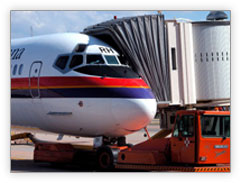- -Able to understand 12 and 24 hour time
- -Able to understand Time Zones and International Dateline
-
Datelines and Travel Time
Click on the Play button to start the introduction video.
-
Show Me
Show Me
12 and 24 hour timeClick on the Play button to start the video.
There are two ways to show the time:
- 24-hour clock
- 12-hour clock
The 24-hour clock shows the hours since midnight, 1, 2, 3, up to 12.
After midday the hours are counted as 13, 14, 15, up to 24.
This 24-hour clock is used:
- in hospitality and tourism.
- in many countries outside Australia.
With the 12-hour clock the day is split:
- Midnight to midday are the am hours.
- Midday to midnight are the pm hours.
With the 12-hour clock the numbers:
- go from 1-12, then start again, and
- go from 1-12.
So it is important to add am or pm to the actual time.
In the travel industry the 24-hour clock is used:
- to avoid confusion.
- in international travel.
While the 24-hour clock is common in travel, some clients may not understand it and therefore may require an itinerary in the 12-hour clock system.
Show Me
Time Zones and International Date LineClick on the Play button to start the video.
The Earth is divided into 24 time zones.
When you move from one time zone to the next, you change your clock by one hour.
- In an easterly direction, move your clock forwards.
- In a westerly direction, move your clock backwards.
Time zones make it convenient for scheduling airlines, railroads and television broadcasts.
Sydney, Australia is ten time zones from Greenwich, England.
If it is midday (12:00) at Greenwich it is 22:00 in Sydney, Australia.
Each new day starts exactly half way around the world from Greenwich.
This is where the International Date Line is located.
The date becomes:
- One day later when you cross the Date Line in a westerly direction
- One day earlier when you cross the Date Line in an easterly direction.
Time Zones in Australia
Australia has three standard time zones:
- Australian Eastern Standard Time (AEST)
- Queensland, NSW, Victoria, Tasmania
- Australian Central Standard Time (ACST)
- Northern Territory, South Australia
- Australian Western Standard Time (AWST)
- Western Australia
Perth and Sydney are separated by two time zones, that is, 2 hours.
-
Say It
There are 2 parts in this section.
1. The GlossaryThe glossary lists the more difficult words related to the topic in alphabetical order. The glossary also gives the meaning for each word.
2. Look, Cover, Write, Check!This activity gives you practice at remembering and writing the words from the glossary.
The Glossary
-
Do It
 Jump to Activities
Jump to Activities
Do It: 12 and 24 hour time
Being able to read timetables is also an important skill. It gives important and useful information such as guest flight arrival times and departures; train and bus arrival times and departures and much more.
The times written in a timetable are usually given in both 12 hour and 24 hour times.
The chart below shows the comparison between 12 hour and 24 hour time very clearly:
12 Hour 12 midnight 1 a.m. 2 a.m. 3 a.m. 4 a.m. 5 a.m. 6 a.m. 7 a.m. 8 a.m. 9 a.m. 10 a.m. 11 a.m. 24 Hour 00:00 01:00 02:00 03:00 04:00 05:00 06:00 07:00 08:00 09:00 10:00 11:00
12 Hour 12 midday (or noon) 1 p.m. 2 p.m. 3 p.m. 4 p.m. 5 p.m. 6 p.m. 7 p.m. 8 p.m. 9 p.m. 10 p.m. 11 p.m. 24 Hour 12:00 13:00 14:00 15:00 16:00 17:00 18:00 19:00 20:00 21:00 22:00 23:00 Do It: Time Zones and International Date Line

Check It
Check It QuizDatelines and Travel TimeClick on Datelines and Travel Time to begin.
- Introduction
- Show Me
- Say It
- Do It
- Check It






















